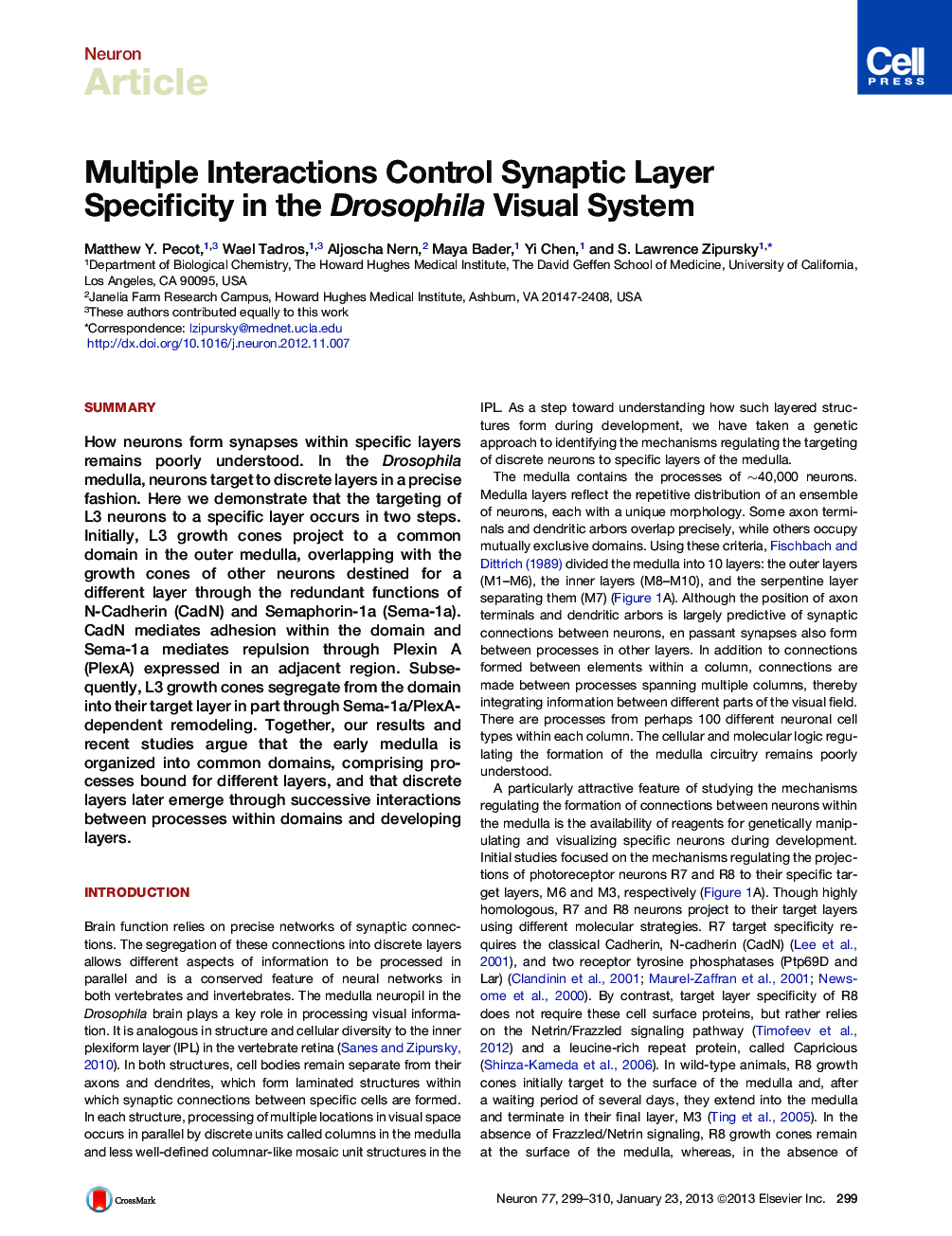| Article ID | Journal | Published Year | Pages | File Type |
|---|---|---|---|---|
| 4321179 | Neuron | 2013 | 12 Pages |
SummaryHow neurons form synapses within specific layers remains poorly understood. In the Drosophila medulla, neurons target to discrete layers in a precise fashion. Here we demonstrate that the targeting of L3 neurons to a specific layer occurs in two steps. Initially, L3 growth cones project to a common domain in the outer medulla, overlapping with the growth cones of other neurons destined for a different layer through the redundant functions of N-Cadherin (CadN) and Semaphorin-1a (Sema-1a). CadN mediates adhesion within the domain and Sema-1a mediates repulsion through Plexin A (PlexA) expressed in an adjacent region. Subsequently, L3 growth cones segregate from the domain into their target layer in part through Sema-1a/PlexA-dependent remodeling. Together, our results and recent studies argue that the early medulla is organized into common domains, comprising processes bound for different layers, and that discrete layers later emerge through successive interactions between processes within domains and developing layers.
► Layer specificity is achieved stepwise from a common domain to a discrete layer ► CadN and Sema-1a act redundantly to restrict growth cones to a common domain ► Sema-1a acts in a separate step to segregate L3 growth cones into the M3 layer ► Conditional protein tags are used to provide selective labeling in growth cones
